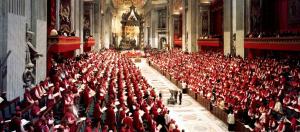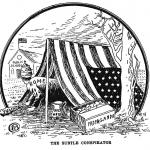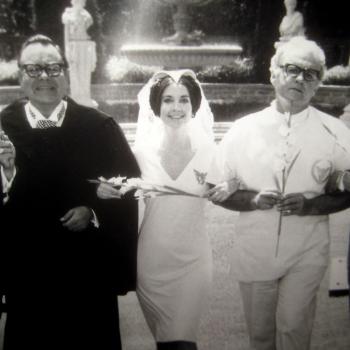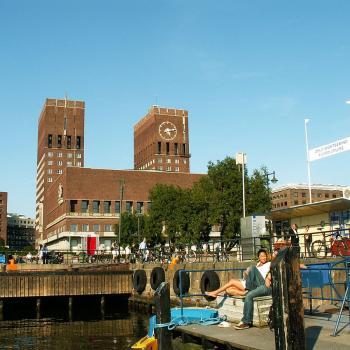
Traditionalist orders and parishes are on the rise. The Dutch Dominicans are full of new life after forsaking a watering-down of their communal and spiritual life. Cardinal Sarah has called for ad orientem liturgy. It just seems to be in the air—young people like the Latin Mass, or at least attach themselves to older devotions. Anecdotal evidence may, for many people in my age group, corroborate this. A recent piece on the English Oratorians emphasizes the lively relationship between their recent growth and their bespectacled curmudgeonry:
The Oratorians have a quirky reputation. Even their admirers are wont to point out their pencil-sharp side partings, finely wrought vestments and vintage spectacles. Yet, while their sense of style may be derided as old-fashioned, the congregation itself is no fusty backwater of English Catholicism. It is, rather, the centre of a resurgence.
In just three years the number of Oratories in England has doubled. Along with more established bases in Birmingham, London and Oxford, new communities have sprung up in Manchester, York and Cardiff. Three more Oratorians will settle in Bournemouth in September. These are not the ultra-refined locations populated by Sebastian Flytes that the Oratorian stereotype might suggest. The seaside town of Bournemouth offers trendy bars, coffee shops and a notable gay community, while facing serious economic challenges such as considerable homelessness. It is a difficult town for any Catholic priest to take on.
But the Oratorians’ track record bodes well. Indeed, it is arguably their pastoral success that accounts for their sudden growth. (The Catholic Herald)
For about a year, I attended the liturgy at the Oxford Oratory; it is a truly beautiful place. The priests and brothers always waited outside to greet congregants after Mass—bespectacled and a bit stuffy perhaps, but full of genuine good cheer in the mold of their founder, St. Philip Neri, “the Apostle of Christian Joy.” Part of the draw for many was, of course, their offering the Latin Mass. I still have wonderful memories of going there on All Saints’ Day; the tunes of the Latin Credo, Sanctus, and Agnus Dei still resonate in my head. The only thing that ever concerned me about the place was a sign discouraging the homeless from hanging around the church (though some still did; I have no doubt the fathers and brothers have a reason for this, but these sorts of signs always bug me).
In other words, I can see why they’re growing; I can see why people have a sense that—with caveats—traditionalism is (a big part of) the future of the Church. As a result, I think it’s important to remind my fellow Catholics of something easily forgotten (or even repressed): there could be no traditionalism without the Second Vatican Council. In fact, trads owe a debt of gratitude to the Council Fathers, even (and perhaps especially) those they sometimes trash.
There is a banal sense in which this is true: traditionalism came about only after the Council; the one is causally and chronologically linked to the other. I, however, mean something more than this. The Church’s reform of the Mass was intended to deal with issues. Among these was, ironically, a lack of reverence during, and an instrumentalization of, the liturgy. Only by calling into question this problem, only by naming it, could traditionalism in its modern form be born. Further, such a movement could only arise in a mass consumer culture of the sort that developed around the time of the Council. The Fathers addressed themselves to just this sort of shift in the world. Traditionalism, in other words, owes both its concerns and its conditions of possibility to Vatican II.
The anxiety about liturgy I am discussing does not excuse some of the more extreme implementations of the Council. Certain overtly “Catholic” objects like statues were removed from parishes; walls were whitewashed, removing the beautiful colors that had so long characterized our churches. I have seen evidence of this in my own life. Only a few years ago did I find out what my baptismal parish looked like before the Council. It’s far from ugly now (the stained glass is lovely, the parishioners are immensely kind), but it has lost so much. Similar things occurred at another nearby parish (which still has a thriving congregation). Again, the church is far from off-putting, but much was changed, in many eyes for the worse.













